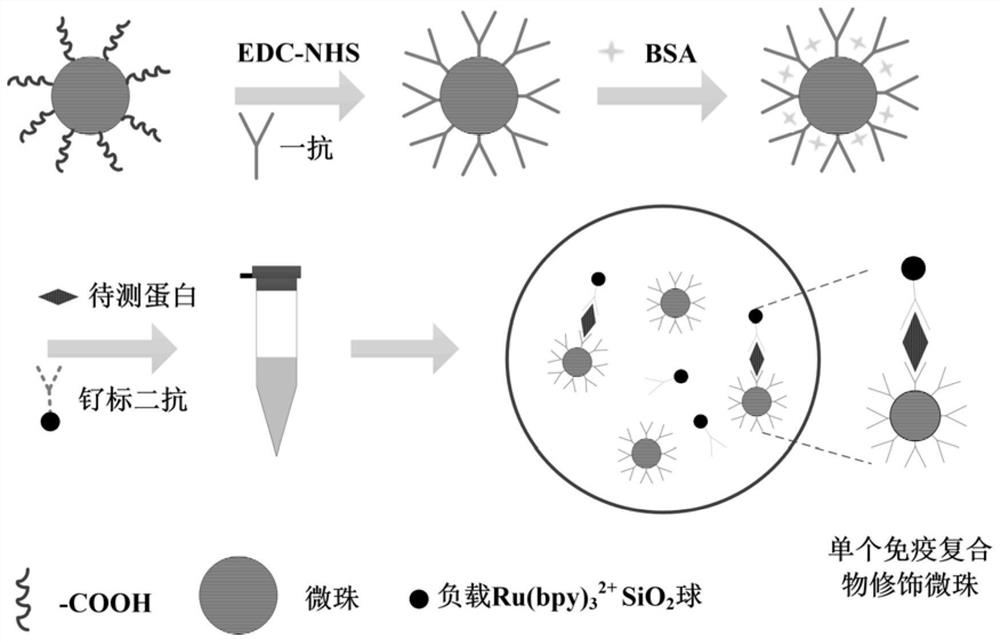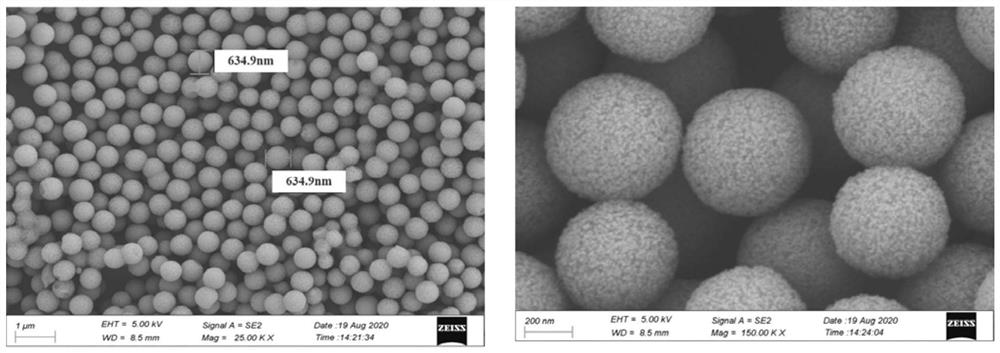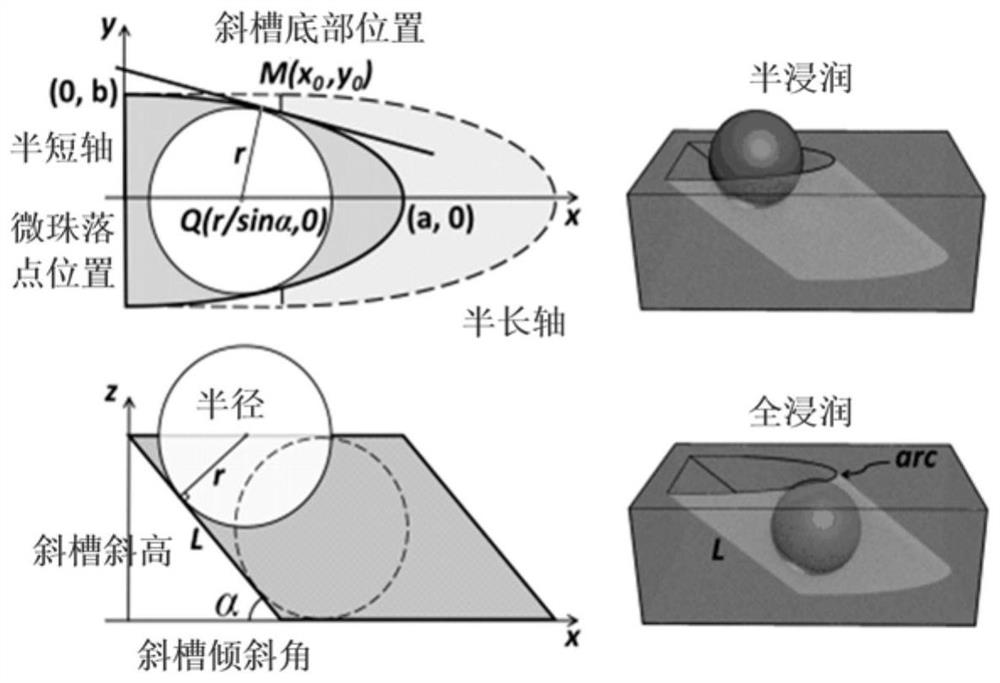Monomolecular protein detection chip and method based on ultramicro electrode array electrochemiluminescence
A protein detection and single-molecule technology, applied in single-molecule protein detection, integrated biomimetic microfluidic chip, and ultra-microelectrode array electrochemiluminescence, can solve the problems of chip failure, poor consistency and repeatability, and complicated device preparation, etc. question
- Summary
- Abstract
- Description
- Claims
- Application Information
AI Technical Summary
Problems solved by technology
Method used
Image
Examples
Embodiment 1
[0085] Example 1 Preparation of immune complex-modified microbeads and ruthenium-labeled functionalization
[0086] In order to ensure that each microbead binds at most one single-molecule protein and increase the intensity of electrochemiluminescence, an immune complex modified microbead and ruthenium-labeled functionalization method were designed. It mainly includes carboxylated microbeads activated by carbodiimide-N-hydroxysuccinimide (EDC-NHS) coupled with primary antibody, bovine serum albumin (BSA) blocks the immune active site, captures the target protein in the sample and Combined with ruthenium-labeled secondary antibody to form immune complex modified microbeads:
[0087] Specifically:
[0088] 1) 2.8 μm magnetic microbeads modified with carboxyl groups (10mL solution contains 6×10 8 ~7×10 8 microbeads) as the carrier to carry out sufficient carboxylation on the outside of the chip;
[0089] Prepare N-hydroxysuccinimide (NHS) with phosphate buffer (0.01M, pH 7.4)...
Embodiment 2
[0093] Example 2 Design and preparation of a single-molecule protein detection chip
[0094] Design the specific structure of the single-molecule protein detection chip (see image 3 ): The basic microwell structural unit used to accommodate 2.8 μm microbeads is a semi-elliptical inclined groove microwell. axis, the inclination angle of the chute, etc., to construct the standard elliptic equation; the semi-major axis of the semi-ellipse is a, the semi-minor axis is b, and the inclination angle of the chute is α. According to the calculation, its size requirements need to meet the standard Ellipse equation:
[0095]
[0096] x and y are the coordinates of any point on the semi-ellipse, and the length of the semi-major axis of the semi-ellipse is a, then we can know a according to the formula 2 =4R 2 / sin 2 α, the length of the semi-minor axis is b, then it can be known that b is calculated according to the formula 2 =4R 2 The tilt angle of the / 3 tilted microwell is α,...
Embodiment 3
[0099] Embodiment 3 Research on the Specific Dimensions of the Microwell Array Unit
[0100] Firstly, it is determined that the SU-8 inclined microwell array prepared on the ITO electrode is 4000 rows × 20 columns, and the potential difference at both ends of a single microwell depends on the ratio of the length of the microwell to the distance between the two copper wires. When the potential difference is large enough, an oxidation or reduction reaction occurs on the electrode surfaces at both ends of the microwell, causing electrochemiluminescence. The highest potential is obtained when the drop point of the microbead is close to the semi-short axis. Therefore, the specific dimensions of the designed microwell array unit are 10 μm in the semi-major axis and 1.6 μm in the semi-minor axis. When an external voltage is applied across the ITO electrodes and a solution exists in the microwell array, a potential gradient is generated due to resistance. Because the resistance of t...
PUM
| Property | Measurement | Unit |
|---|---|---|
| Radius | aaaaa | aaaaa |
| Particle size | aaaaa | aaaaa |
Abstract
Description
Claims
Application Information
 Login to View More
Login to View More - Generate Ideas
- Intellectual Property
- Life Sciences
- Materials
- Tech Scout
- Unparalleled Data Quality
- Higher Quality Content
- 60% Fewer Hallucinations
Browse by: Latest US Patents, China's latest patents, Technical Efficacy Thesaurus, Application Domain, Technology Topic, Popular Technical Reports.
© 2025 PatSnap. All rights reserved.Legal|Privacy policy|Modern Slavery Act Transparency Statement|Sitemap|About US| Contact US: help@patsnap.com



